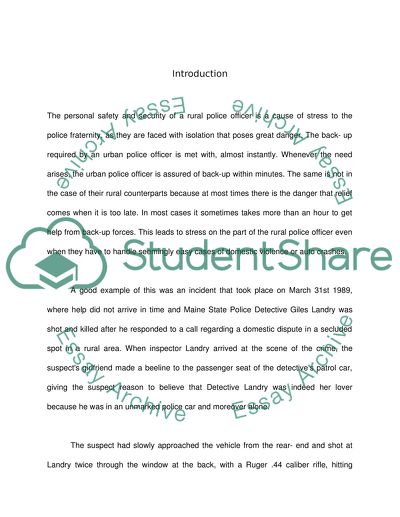Cite this document
(“The dangers that police officers face in rural areas due to the lack Research Paper”, n.d.)
The dangers that police officers face in rural areas due to the lack Research Paper. Retrieved from https://studentshare.org/miscellaneous/1553016-the-dangers-that-police-officers-face-in-rural-areas-due-to-the-lack-of-back-up-or-riding-partners
The dangers that police officers face in rural areas due to the lack Research Paper. Retrieved from https://studentshare.org/miscellaneous/1553016-the-dangers-that-police-officers-face-in-rural-areas-due-to-the-lack-of-back-up-or-riding-partners
(The Dangers That Police Officers Face in Rural Areas Due to the Lack Research Paper)
The Dangers That Police Officers Face in Rural Areas Due to the Lack Research Paper. https://studentshare.org/miscellaneous/1553016-the-dangers-that-police-officers-face-in-rural-areas-due-to-the-lack-of-back-up-or-riding-partners.
The Dangers That Police Officers Face in Rural Areas Due to the Lack Research Paper. https://studentshare.org/miscellaneous/1553016-the-dangers-that-police-officers-face-in-rural-areas-due-to-the-lack-of-back-up-or-riding-partners.
“The Dangers That Police Officers Face in Rural Areas Due to the Lack Research Paper”, n.d. https://studentshare.org/miscellaneous/1553016-the-dangers-that-police-officers-face-in-rural-areas-due-to-the-lack-of-back-up-or-riding-partners.


